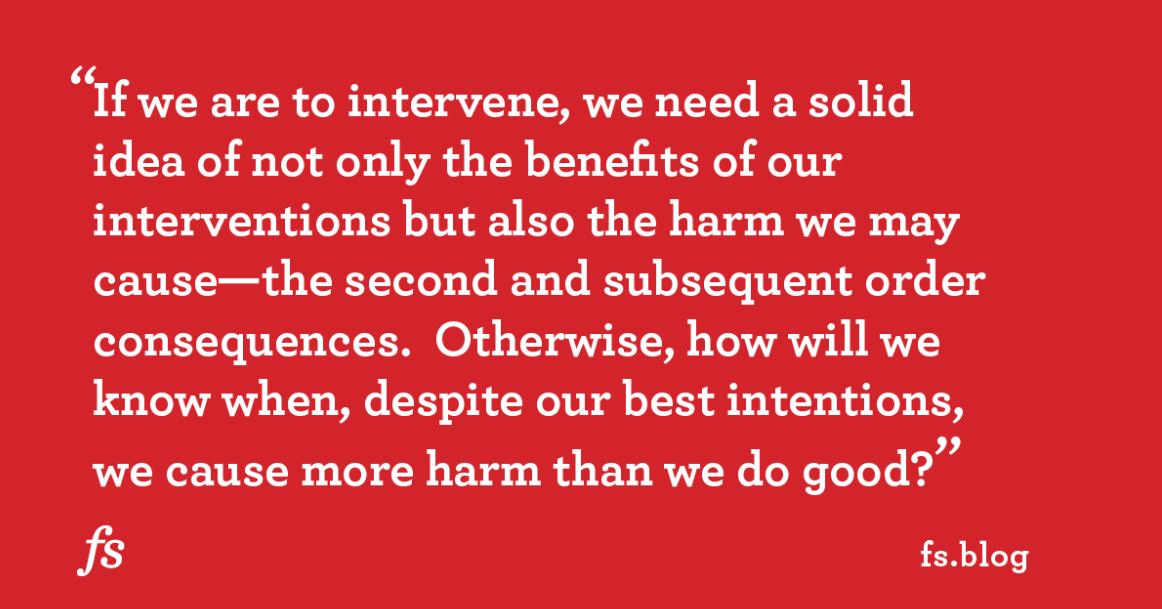Getting From A to B Is Not Aways A Straight Line

Why Getting From A to B Is Not Aways A Straight Line
We run our lives largely on auto-pilot. In most circumstances your experience of getting from A to B is relatively smooth and seemless, and when it isn't you have established ways and means of overcoming the bumps and obstructions.
It would be impossible to survive let alone live without the whole range of unconscious skills and strategies that you use in every day life as a fully functional human being.
The same is true in organisations of all types and shapes and sizes.
Organisations
are held together and operate by the execution of a vast array of
standard processes that take place within a framework of managed
functions such as production, sales, finance and HR.
As individuals and organisations we can describe this as business as usual.
In the course of your everyday life you regularly make changes to the way you do things.
You change the route you drive the kids to school because of road works. You modify your diet by cutting sugar and salt.
In your working life you go on courses to improve existing skills or to learn new ones.
Organisations frequently make modifications to existing processes and working procedures. Some embrace the concept of continuous improvement by the finding ways of making incremental improvements in products and services.
All of these changes are taken on board and put into practice as part of business as usual and getting from A to B proceeds in a straight line.
But when getting from A to B involves making significant changes such as (a) doing
something new that will change the existing modus operandi; or (b) launching a major initiative or new venture, the progress from A to B will not be in a straight line.
For you as an individual or an organisation it is critical that you apply the "business as usual" test.
Why?
Because although the numbers may make sense and you have a sound logical basis for making this change, you run a significantly increased risk of failure if you have not considered the knock-on effects of your proposed change, and especially the impact on those people who will be most impacted by the change.
The "Business As Usual" Test
[1] Is the change you are proposing an incremental change?
- Can it be introduced as part of business as usual
- Can it be
absorbed as part of your everyday life or the day-to-day running of your organisation?
Or,
[2] Is this a step change because of its size, complexity, priority, timescale and strategic
importance?
Does it require:
- More thought and consideration of the consequences?
- Some form of structured process to successfully implement it?
- Should it be handled outside of business as usual?
Why does this matter?
[1] Because of random uncertainty and unpredictable events - as Nassim Taleb has observed:
- "Life is more random than you think and your ability to navigate it rationally is more limited than you think."
[2] Because the price of failure comes high - any major change or initiative is unlikely to succeed:
- Where the second order consequences have not been considered, and
- That fails to identify and
quantify the impact on those people most affected by it
There are several reasons why this is often overlooked:
- Because the focus is on getting from A to B as fast as possible
- In the case of an organisation the culture gets in the way with enbedded resistance [because you are challenging "how things are done round here"].
- It's hard to talk about [without a framework and language to express the issues]
How To Identify The Issues That Will Arise When Making Major Change?
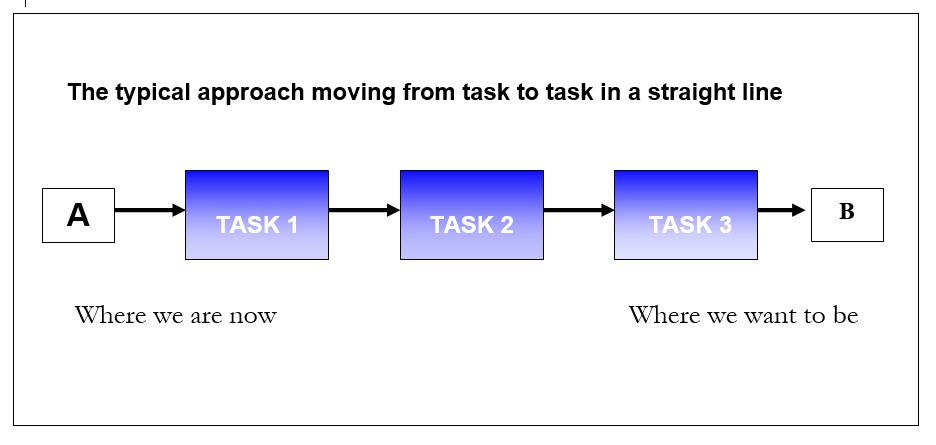
The illustration above highlights the typical progress from task to task in getting from A to B in a straight line.
- The changes implemented here are incremental and can be accommodated within business as usual.
But when you are considering implementing a major change - which I refer to as a step change - the line of progress getting from A to B is not a straight line.
-
There are always dependent issues and impacts that accompany each
task and these have to be resolved before a successful
transition takes place to the next task
- Once a task [or set of set of tasks] has been identified, then you need to think carefully about all of the issues and impacts that will arise and that have to be resolved before you can successfully progress to the next task
The key question with each task is:
The Progress And Issues Map The typical approach to initiating any major change, whether in personal life as an individual or as an organisation, assumes that it can be treated as incremental change and accommodated within business as usual. But of course this approach assumes too much and overlooks basic success-critical steps. I have created and successfully used a tool,
illustrated above,
that I call a PI-MAP [Progress and Issues Map] which is visual reminder to undertake these steps and with each task to ask yourself [and your team if you are applying this to an organisation]: What issues and impacts have
to be resolved to successfully move on to the next task with
confidence in a successful outcome for the whole initiative?
This simple diagnostic process causes you to: This process is scalable and can be used at the individual level or within an organisation. I use this process myself in my personal life when I am considering any major change. I always seek the input of at least one other person and usually several when undertaking this process at the personal level. This is important to overcome my cognitive biases and "blind spots". I have also used this process many times with a number of business clients in different business sectors and in organisations of various sizes. Applying the PI-MAP process in organisations There are a number of key benefits to an organisation and its advisors in employing this approach. In summary it: - Practical guidelines Please Note This is not a sales-pitch for a consultancy service. I am focused on different business interests now. However, I am happy to answer any questions if I can.
Everybody has accepted by now that change is unavoidable. But that still
implies that change is like death and taxes - it should be postponed as long as
possible and no change would be vastly preferable. But in a period of upheaval,
such as the one we are living in, change is the norm. [Peter Drucker]
Why Do You Want To Go From A to B? Before you get too committed to instigating and implementing your
step change at either a personal or organisational level I must ask you: "Why do you want to go from A to B?" Before we
look more closely at the structure and format of questions you could be
asking about the issues that are associated with each task on your
progress from A to B - I want to challenge you with 3 controversial questions: [1] Are you enacting the "Do Something Syndrome"? Do you know when to step in and when to leave things well alone? If you are to intervene, you need a
solid idea of not only the benefits of your interventions but also of the the
harm you may cause. If you have not asked: "And then what?" at least 3 times, you have not earned the right to intervene. [2] Can you apply Inversion to your step change objective? Instead of thinking forward about what
you need to do to get what you want, you spin it round and in reverse,
away from your objective, about what you don’t want to
happen. The most powerful benefit of using the inversion technique is that it will help you to avoid the bad decisions preventing you from achieving your goals. Success equals good decisions minus bad decisions. Have you thought about what you
want to avoid, or the opposite of what you want to achieve, so that you can plan
effectively to prevent failure? [3] Can you apply a Subtractive Solution? Our natural reaction when proposing a solution, or launching a new initiative, is to add something. We seem to have an innate bias against subtraction. Research shows: "Additive
ideas come to mind quickly and easily, but subtractive ideas require more
cognitive effort... ...over time, the habit of looking for
additive ideas may get stronger and stronger, and in the long run, we end up
missing out on many opportunities to improve the world by subtraction." Ask yourself “What are
the things that I should avoid?” and "What can I take away?" rather than asking “What should I do?”
The Discipline of Considering Impacts Before Rushing Into Action
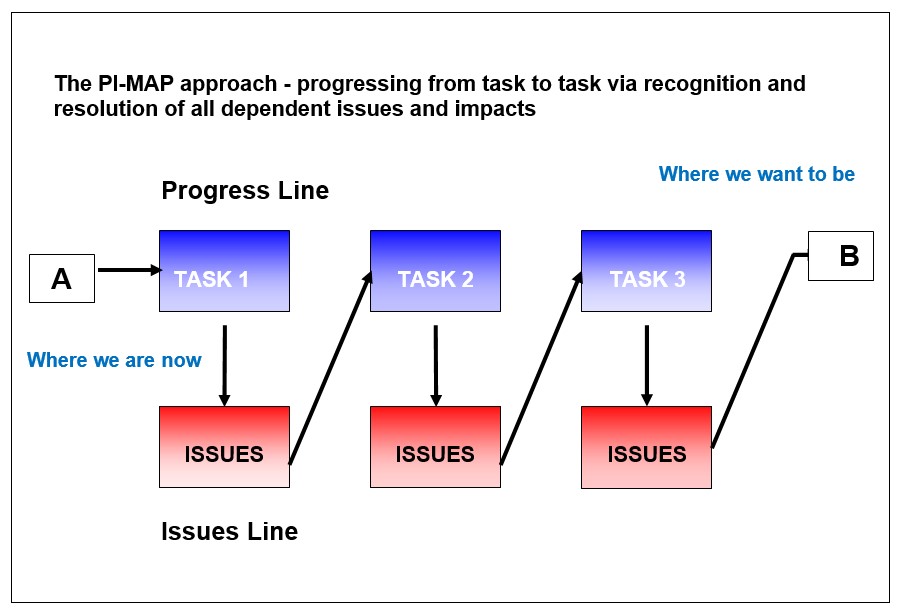
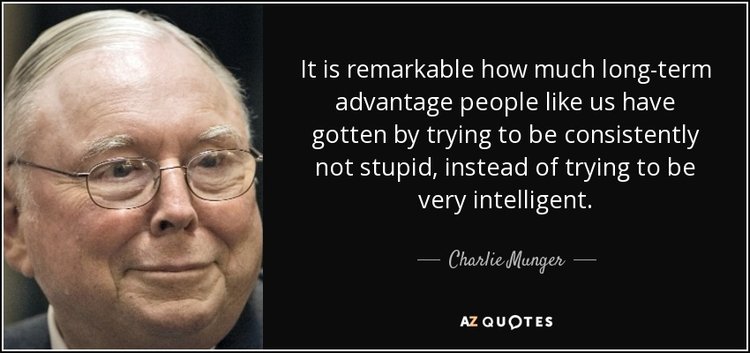
How To Identify Issues On Getting From A to B

As you consider each task on your progress getting from A to B in the implementation of your step change there are 2 areas that you will need to consider:
[1] The People Side
There are 3 critical questions that you should always ask:
- Who will this impact?
- How will it impact them?
- What steps do I have to take to mitigate these effects?
If you are implementing a step change in an organisation I would recommend that you build a list [technically a stakeholder map] of all the people who will be impacted by the execution of the task under consideration.
Wherever possible talk directly to these people and listen to their concerns and work out mutually agreeable ways of mitigating and resolving the impacts.
In my experiences of corporate life with centralised "command and control" style management, and/or in Asian cultures, the senior management tend to favour the "shock and awe" approach.
This amounts to the imposition of top-down change with little or no consideration of the human impact.
If you are implementing a step change in your personal life and, for example, those people most impacted by your proposed step change are your family - your partner and dependent children - the same principles apply.
Personal example: Dealing With The Issues Arising From A Family Relocation
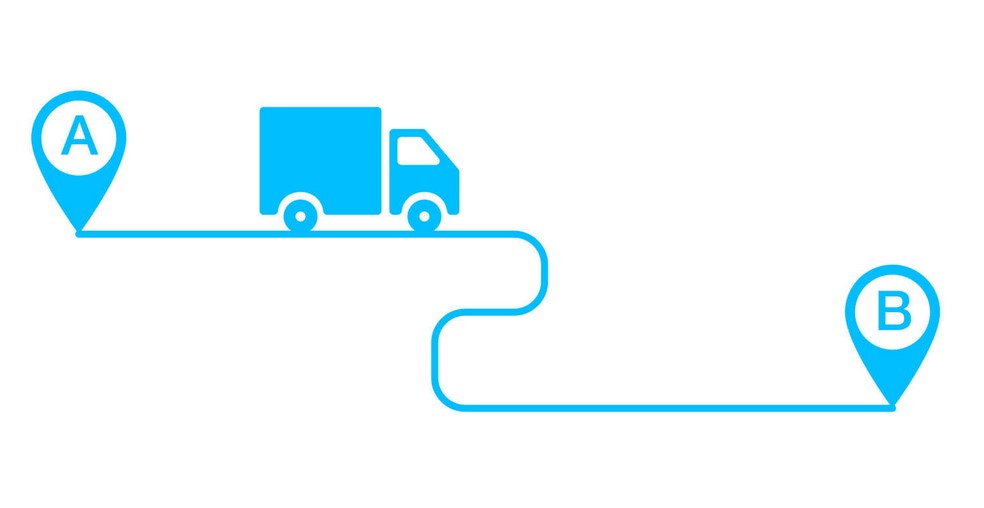
Some years ago when our children were aged 10 and 13, my wife and I were planning a move to a new region to be closer to the University where my wife was a senior lecturer.
The trigger for the move was that my wife was driving a 100 miles round trip to the University each working day and she had been involved in a serious road traffic accident which had serious implications for her health and well being. So clearly we had major motivation to make this move.
However this represented a major step change for the family and especially the children with changes to their schooling and disruption to their established friendship groups.
I spent a lot of time looking at the new region and very carefully identified schools of very similar academic and demographic profile to what they were used to.
In terms of the impacts on all family members, the move would have a significant and beneficial impact on my wife, I was neutral as the work I did always involved travel so where I lived didn't really matter to me and I had no great affinity with the location where we lived.
When we discussed the move with the children our son was OK with it and not bothered at all, but our daughter was extremely bothered and very resistant to moving because she didn't want to leave her friends behind.
So, in order to lessen the impact of the move we arranged for her to stay on at her current school and stay with the family of one of her friends during the week and until the end of the academic year. We also arranged for number of regular visits back, to see her friends, in the 6 months or so after she had finished at her old school.
Looking back, I can't say that her transition was entirely painless [for all of us] but I do believe that we made it more bearable for her and gave her the sense that we had done all we could to lessen the impact on her.
[2] The Second Order Consequences on functions, processes and personal and organisational environments
Second order thinking can be summarised as going beyond the obvious and avoiding unintended consequences when getting from A to B.
- It is about thinking in terms of interactions and time, and considering the consequences of a potential decision or action.
- It is about seeing things that other people don't or can't see.
The key question to ask repeatedly for up to 5 iterations is:
- "And then what..?"
Here are 4 guiding principles:
- Question everything. Don't make assumptions, and when exploring possible solutions, always ask "what happens then," to understand longer-term impacts.
- Involve others. Speak with colleagues to get alternative perspectives. Undertake a thorough stakeholder analysis.
- Think long term. Consider how the decision will play out at different time points, for example, a week, month or year from now, and whether circumstances might change.
- Don't discount options too quickly. Keep all options on the table until you're sure they aren't the right choice.
Personal Example: Second Order Thinking About Family Relocation

Continuing with the anecdote above about our family relocation:
Having considered the people aspects of our planned move we then considered other aspects - especially the availability and cost of housing with the catchment area of our chosen schools for the children.
In the UK places in schools are awarded on the proximity of the family housing in relation to the location of the school.
I have written about how this system works and the research and analysis that I undertook to make this decision regarding the demographic issue here.
The schools that we selected for our children were in a relatively affluent areas and the cost of buying a house there was more than we could afford at that time.
We decided to take a calculated gamble on my future earnings from my business and rented a house where the owners were working overseas on a business contract - and secured places for our children in our preferred schools.
This involved some second order thinking because the rent was at the dollar equivalent of $2.5K-$3k USD per month which 20 years ago was quite expensive.
However, I calcuated that if we moved to a lower cost area for housing the state schools were poor and I would have to pay a lot of money for private/fee-paying schools, and therefore the rent premium was lower than the school fees!
The gamble in this calculation was based on further second order thinking that I had the feeling that the owners would get so settled in their new lifestyle and location that they wouldn't want to come back and would be receptive to selling the house to us.
I also calculated that as a fall back position, once we had moved into the area and familiarised ourselves with the people and the area we would have more immediate and faster access to other opportunitues to rent or buy more affordable properties .
Fortunately the way it played out, this wasn't necessary. The gamble paid off as my business earning did increase substantially over the following 2 years and the owners did decide to stay overseas and sold us the house!
Business Example: How I Engineered A "Blues Brothers" Moment With 3 Operations Directors

I undertook a project with a large heavy engineering company and was commissioned by the Strategy Director to assist the company in changing their culture from a "Production Culture" with a focus on taking customer orders and fulfilling them to a "Business Development Culture" where they proactively sought new business.
It did not take too much second order thinking for me to understand that this clearly represented a major step change for the company, but of course the directors did not realise this. They wrongly assumed that this was an incremental change that getting from A to B could be absorbed within business as usual.
I undertook all the usual preliminary investigation and analysis in order to present to the Board a plan of action for them to sign up to.
From the outset it was clear to me that there were 2 fundamental issues that needed to be addressed:
Firstly, no senior person in the company owned the sales process, that is to say that there was no one taking responsibility for promoting and implementing the necessary changes to create a business development culture.
Secondly, no one in that company knew anything about corporate business-to-business selling. They were all technical people with an engineering mindset.
So I spent the majority of my time during the preliminary analysis period spending time with the senior management team and the 3 Operations Directors to understand their thinking, to sew the seeds of what a business development focused company would look like and, critically, to show them how this aligned with their current revenue objectives.
I also took every opportunity to get them to buy into the vision of how a change of culture to a sales focus could benefit then personally in the achievement of their revenue objectives.
But I was very aware that they did not appreciate the personal impacts on themselves as directors. I could see that they [again wrongly] assumed that all this "change stuff" was only going to affect the middle managers and the engineering staff.
So when it came to my presentation to the Board my whole focus was on getting those 3 Operations Directors to have a "come-to-Jesus moment", a damascene transformation rather like when Joliet in The Blues Brothers saw the light, where they understood and admitted to me - and more importantly to each other - that it was their responsibiity to own the sales process.
I did my presentation and there were lots of nodding heads as I built up to a crescendo and then challenged them with the following statement:
"Gentlemen... who among you owns the sales process in this company?"
Then I shut up, looked at them and listened.
There was a pregnant pause for about 30 seconds then one of the Operations Directors slowly raised his hand, then a few seconds later the other 2 followed suit. Then one of them said:
"But Stephen we don't know how to do sales..."
Job done! To cut to the chase I got their buyin to a customised sales training package that I had developed for them and their individual commitment to make themselves available to engage with the process.
Recommended Reading
Shane Parrish runs an excellent blog on thinking skills and he has posted a fascinating and informative article that I thoroughly recommend.
The Law of Unintended Consequences: Shakespeare, Cobra Breeding, and a Tower in Pisa
Taking Account Of Complexity And The Randomness of Life
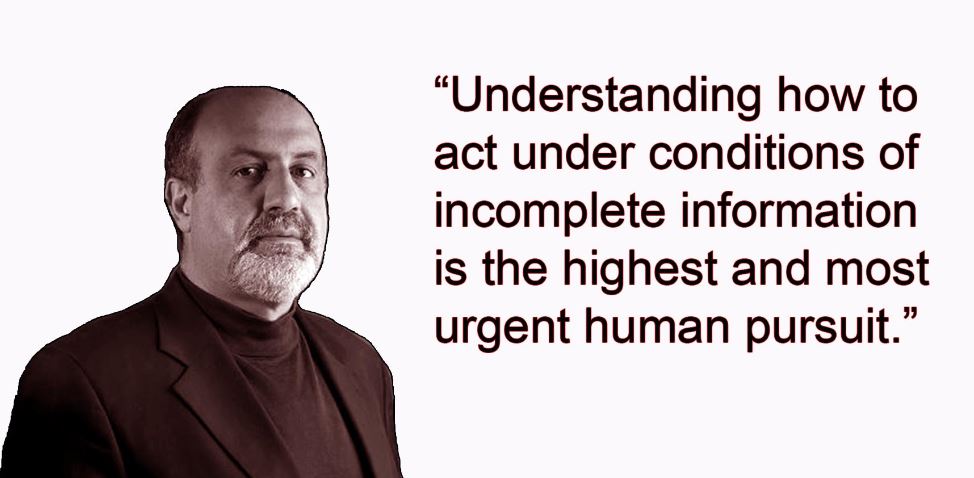
Finally, to complete and conclude this article I want to leave you with 3 further areas for consideration in getting from A to B when implementing a step change, and these are to do with the complexity and randomness of life.
Recent global events with the pandemic, the Ukraine-Russia war and the consequent fuel crisis, supply chain issues, rising interest rates and inflation are all powerful reminders of just how uncertain life can be, and especially the unforseen side-effects of these events.
I make no apology for repeating the quote I shared above from Nassim Taleb:
Life
is more random than you think and your ability to navigate it rationally is
more limited than you think.
Here are 3 reality checks for testing some major assumptions that we all make and that can have impact on your proposed step change:
[1] Test Your Assumptions and Beware Of Gaps Between The Map And The Territory
We live in a very complex world and the scale of it all is beyond human cognitive capacity.
There is just way too much of it for us to hold it all in our heads so we create maps of all this complex territory and use heuristics and mental models to understand and apply some of the principles of how things work.
But
the maps [or models] that we create can become disconnected from the on
-the-ground-reality.
This can really lead you astray when getting from A to B.
This disconnect leads to gaps between the world as we think it is - and as we are led to believe it is - and how things really are.
I have covered this subject in some depth in Ergodicity - How Not To Be Fooled By Randomness
What assumptions are you making about your life, your organisation, and your models of the environment you live and operate in?
[2] Look Out For The Top-Down Over-Simplifications
Be very wary about models, facts and figures from Governments and other large institutions - especially policy makers.
A classic error and inherent flaw in this data is that they are prone to top-down over-simplification because they do not measure what they can not see and as a result they impose simple [politically] idealised solutions onto complex situations and systems.
This is another classic illustration of a very common disconnect between map and territory.
This is an important subject and I give more details and real-life examples in How To Benefit From The Unseen Margins.
What assumptions are you making based on Government and other institutional and "official" data?
[3] How To Find Cause And Effect In The Passage Of Time - With Individuals And Organisations
Understanding cause and effect in getting from A to B is important but difficult to see and is subject to a range of assumptions often linked to our cognitive biases.
Another factor that distorts our understanding of cause and effect is the passage of time.
The longer the passage of time the harder it is to see a real cause and effect.
Here are two shortcuts to help you establish cause and effect:
(a) Cause and effect in organisations
In my experience a good short-cut to cause and effect in organisations is to understand the dominant culture.
I
say "dominant culture" because there are usually many different
sub-cultures in an organisation. This is another big subject and I will
be posting an article on this soon.
Why is culture a good short-cut to understanding cause and effect in organisations? It's because organisational culture is [in my experience] the largest single driver of how individuals and groups will behave in an organisational environment.
Organisational culture is like an invisible operating system and it will over-ride education, intelligence and common
sense.
(b) Cause and effect in individuals
When it comes to other people, and you are looking for cause and effect, pay very close attention to their behaviour and their actions.
I have learned the hard way over many years in business to listen to what people say and then watch very carefully how they behave over a period of time, and then and pay close attention to the disconnects.This is often referred to as "walk-talk gap".
Do your assumptions about cause and effect take account of individual "walk-talk gaps" and organisational culture?
Free download: - Getting From A to B Key Points
Further Reading:
Persuasion
[1] The Art Of Persuasion The One Fundamental Principle - Create A Win-Win
[2] The Art Of Persuasion Advanced Communication Skills - Gaining BuyIn
[3] The Art Of Persuasion Planning For Success - Here's How To Do It!
Change
Getting From A to B Is Not Aways A Straight Line
Group Culture - The Invisible Software That Rules Your Life
Change Questions To Change Your Outcomes
Communication
How To Influence without Authority - 6 Key Tips
Return from "Getting From A to B" to: Communication Persuasion and Change
Or to: Walking The Talk
LATEST ARTICLES
The Power Of Asking The Right Question
 The Power Of Asking The Right Question Lies In The Quest For Insight. To experience the power of asking the right question you must develop the practice of asking questions. The best way to improve th…
The Power Of Asking The Right Question Lies In The Quest For Insight. To experience the power of asking the right question you must develop the practice of asking questions. The best way to improve th…Site Pathways
 Here is a site pathway to help new readers of Zen-Tools navigate the material on this site. Each pathway is based around one of the many key themes covered on this site and contain a 150 word introduc…
Here is a site pathway to help new readers of Zen-Tools navigate the material on this site. Each pathway is based around one of the many key themes covered on this site and contain a 150 word introduc…How To Live With Contradiction - Beyond Thought Let Stillness Speak
 A major impact on so many peoples' lives is the situational contradiction of unfilled realistic expectations. So where does all this leave us? Well here we are, with mental equipment that is more lim…
A major impact on so many peoples' lives is the situational contradiction of unfilled realistic expectations. So where does all this leave us? Well here we are, with mental equipment that is more lim…How To Trust The Process Of Mindfulness - Right Now
 In mindfulness, the process isn’t some distant goal — it's what is happening right now. When we talk about how to trust the process of mindfulness the credibility of the process is heavily dependent…
In mindfulness, the process isn’t some distant goal — it's what is happening right now. When we talk about how to trust the process of mindfulness the credibility of the process is heavily dependent…Inner Mastery For Outer Impact - Mental Clarity For Effective Action
 Insights only matter if they translate into consistent action. In a world crowded with quick fixes and motivational soundbites, the theme “Inner Mastery for Outer Impact” calls us to something more e…
Insights only matter if they translate into consistent action. In a world crowded with quick fixes and motivational soundbites, the theme “Inner Mastery for Outer Impact” calls us to something more e…The Wise Advocate - Helping You Achieve The Very Best Outcome
 The focus of your attention in critical moments of choice either builds or restricts your capacity for achieving the best outcome. When we talk of 'The Wise Advocate' its easy to think of the consigl…
The focus of your attention in critical moments of choice either builds or restricts your capacity for achieving the best outcome. When we talk of 'The Wise Advocate' its easy to think of the consigl…Trust The Process - Beyond The Cliche
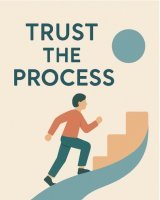 The phrase "trust the process" has become a cliche, the woo-woo mantra of the "self help" industry. Those three little words feel like they ought to mean something useful but hidden behind them are a…
The phrase "trust the process" has become a cliche, the woo-woo mantra of the "self help" industry. Those three little words feel like they ought to mean something useful but hidden behind them are a…The Dopamine Delusion - Why Anticipation Beats Achievement
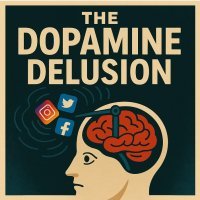 The thrill we feel is not in the having, but in the wanting. The more we have, the more we want. The more things we acquire and the easier things get for us, the more discontent we feel. The more spo…
The thrill we feel is not in the having, but in the wanting. The more we have, the more we want. The more things we acquire and the easier things get for us, the more discontent we feel. The more spo…The Power Of Silence Is Experienced In Your Use Of Language
 Practise the "Beneficial Neurological Delay" for optimal comprehension. The power of silence is experienced in your use of language, specifically: - How you formulate the words you use to think and in…
Practise the "Beneficial Neurological Delay" for optimal comprehension. The power of silence is experienced in your use of language, specifically: - How you formulate the words you use to think and in…Dealing With Setbacks - 5 Questions To Help You Face Discomfort
 How To Counter The Cognitive Shock Of A Setback. Setbacks challenge your instinctual desire for control and comfort, making it unnatural to respond with calm or acceptance. The reason for these instin…
How To Counter The Cognitive Shock Of A Setback. Setbacks challenge your instinctual desire for control and comfort, making it unnatural to respond with calm or acceptance. The reason for these instin…Why Praxis Is The Key To Living A Successful And Stress Free Life
 Praxis Is The Process Of Taking Informed Action To take informed action you need to be prepared with information, knowledge, education and insight. Informed action is objective action that: - Seeks to…
Praxis Is The Process Of Taking Informed Action To take informed action you need to be prepared with information, knowledge, education and insight. Informed action is objective action that: - Seeks to…The Power Of Working With The Front Line
 How To Exercise Influence Without Authority In Complex Systems I first discovered the power of working with the frontline when I was working as a business troubleshooter on large projects, programmes…
How To Exercise Influence Without Authority In Complex Systems I first discovered the power of working with the frontline when I was working as a business troubleshooter on large projects, programmes…
